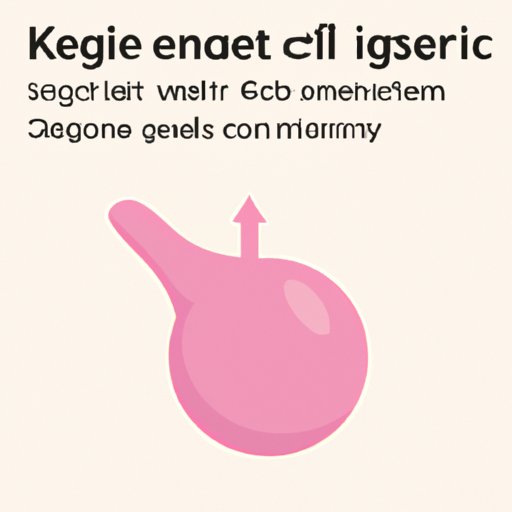
Introduction
Kegel exercises are an essential tool for women looking to improve their pelvic floor health. These exercises can help strengthen the muscles responsible for bladder and bowel control, reduce incontinence, and enhance sexual satisfaction.
This article aims to provide a beginner’s guide to Kegel exercises to help women improve their health and quality of life.
What are Kegel exercises? How do they work?
Kegels are simple, discreet exercises that involve contracting and relaxing the muscles that control the flow of urine. To perform Kegels, you need to identify your pelvic floor muscles and contract them for a few seconds before relaxing them. You can do these exercises sitting down, standing up, or lying down.
The pelvic floor muscles can become weak or overactive due to pregnancy, childbirth, aging, or hormonal changes. This weakening can lead to issues such as incontinence and pelvic organ prolapse. By performing Kegels regularly, you can strengthen these muscles and prevent or treat these problems.
Why Kegel exercises matter
Kegels offer more than just improved pelvic floor health. They can also lead to better sex, stronger core muscles, and improved posture. Kegels are simple and discreet and can be done anywhere, anytime.
A step-by-step guide to performing Kegel exercises correctly
Identify your pelvic floor muscles by stopping the flow of urine mid-stream. Once you have identified these muscles, you can perform the following steps:
- Contract your pelvic floor muscles for 3-5 seconds
- Relax your muscles for 3-5 seconds
- Repeat the exercise 10-15 times per session, three times daily
It’s essential to avoid common mistakes such as squeezing the buttocks or holding your breath as you perform these exercises. You can also progress your routine by performing longer contractions or increasing the number of repetitions.
Kegels for every age and stage
Women of any age or stage can benefit from Kegel exercises. Pregnant or postpartum women, menopausal women, and women with certain medical conditions can modify these exercises based on their unique circumstances.
For example, pregnant women may benefit from Kegels to prepare for childbirth. Postpartum women may need to wait a few weeks before performing these exercises. Menopausal women can use Kegels to alleviate symptoms of urinary incontinence. Women with certain medical conditions can also benefit from Kegels, such as those with multiple sclerosis or spinal cord injuries.
Exploring the benefits of Kegel exercises for women
Kegels can improve the overall health and wellbeing of women. A strong pelvic floor can lead to greater confidence, less anxiety, and better intimacy. It can also help women engage in physical activities that they may have avoided previously due to concerns about incontinence.
Conclusion
Kegel exercises are a simple and discreet way for women to improve their pelvic floor health and overall wellbeing. Incorporating Kegels into your daily routine can have lasting benefits for your health and quality of life.




